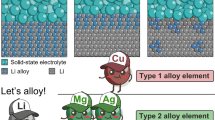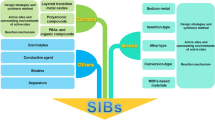Abstract
The effect of formation protocol including different constant voltage points at low potential, different constant voltage time, and different current were studied in this paper. The electrochemical impedance spectroscopy and stored and cycle performance tests were used to verify the parameter of different formation protocols. The results show that the resistance of solid electrolyte interphase film R f drops during the whole potential range except 3.1 to 3.5 V and the diffusion coefficient P f which represents the uniformity of anode electrode surface decreases only at this potential range. The effects of different constant voltage points at 3.1 to 3.5 V were studied to increase the uniformity of anode electrode surface and decrease the resistance of the SEI film. The film is more stable at 3.3 V constant voltage than other potentials, and a constant voltage 60 min is enough to form a uniformity and compact passivation layer. With the constant voltage time extending, the P f decreases. When the formation current to constant potential is increased, the film is more loose (or porous) and less adhesive. The formation protocol of 0.01 C to 3.3 V constant voltage 60 min shows the best cycling performance, and formation protocol of no constant voltage shows the worst cycling performance. Considering the time and energy consumption, the formation protocol of 0.05 C to 3.3-V constant voltage 60 min is the best.











Similar content being viewed by others
References
Verma P, Maire P, Novák P (2010) Electrochim Acta 55:6332–6341
Aurbach D, Levi MD, Levi E, Schechter A (1997) J Phys Chem B 101:2195–2206
Ohzuku T, Iwakoshi Y, Sawai K (1993) J Electrochem Soc 140:2490–2498
Peled E, Golodnitsky D, Ardel G (1997) J Electrochem Soc 144:L208–L210
Cheng Y, Wang G, Yan M, Jiang Z (2007) J Solid State Electrochem 11:310–316
Park M, Zhang X, Chung M, Less GB, Sastry AM (2010) J Power Sources 195:7904–7929
Wang F-M, Cheng H-M, Wu H-C, Chu S-Y, Cheng C-S, Yang C-R (2009) Electrochim Acta 54:3344–3351
Park G, Nakamura H, Lee Y, Yoshio M (2009) J Power Sources 189:602–606
Zheng M-S, Dong Q-F, Cai H-Q, Jin M-G, Lin Z-G, Sun S-G (2005) J Electrochem Soc 152:A2207–A2210
Yamada Y, Iriyama Y, Abe T, Ogumi Z (2009) Langmuir 25:12766–12770
Kwak G, Park J, Lee J, Kim S, Jung I (2007) J Power Sources 174:484–492
Menkin S, Golodnitsky D, Peled E (2009) Electrochem Commun 11:1789–1791
Cho IH, Kim S-S, Shin SC, Choi N-S (2010) Electrochem Solid State Lett 13:A168–A172
Matsui M, Dokko K, Kanamura K (2008) J Power Sources 177:184–193
Lee S-B, Pyun S-I (2002) Carbon 40:2333–2339
Zhang SS, Xu K, Jow TR (2004) J Power Sources 130(1–2):281–285
Zhang SS, Xu K, Jow TR (2006) Electrochim Acta 51:1636–1640
He Y-B, Tang Z-Y, Song Q-S, Xie H, Liu Y-G, Xu Q (2008) J Electrochem Soc 155:A481–A487
Peleda E, Golodnitsky D, Ulusa A, Yufita V (2004) Electrochim Acta 50:391–395
Nobili F, Tossici R, Croce F, Scrosati B, Marassi R (2001) J Power Sources 94:238–241
Croce F, Nobili F, Deptula A, Lada W, Tossici R, D’Epifanio A, Scrosati B, Marassi R (1999) Electrochem Commun 1:605–608
Umeda M, Dokko K, Fujita Y, Mohamedi M, Uchida I, Selman JR (2001) Electrochim Acta 47:885–890
Fey GTK, Yo WH, Chang YC (2002) J Power Sources 105:82–86
Kang X, Shengshui Z, Richard J (2005) J Power Sources 143:197–202
Huang K-L, Wang Z-X, Liu S-Q (2007) M Chemical Industry. Beijing, pp143–145
Kang X (2004) Chem Rev 104:4303–4417
Ramadass P, Haran B, White R (2002) J Power Sources 112:614–620
Acknowledgments
This work was supported by the China 863 Science Foundation.
Author information
Authors and Affiliations
Corresponding author
Rights and permissions
About this article
Cite this article
Yang, D., Zhao, H., Wang, J. et al. Effects of constant voltage at low potential on the formation of LiMnO2/graphite lithium ion battery. J Solid State Electrochem 18, 1907–1914 (2014). https://doi.org/10.1007/s10008-014-2431-1
Received:
Revised:
Accepted:
Published:
Issue Date:
DOI: https://doi.org/10.1007/s10008-014-2431-1




